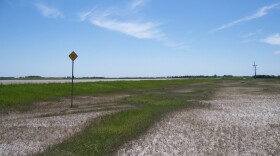“We hold these truths to be self-evident, that all men are created equal.” That, of course, is a quote from the U.S. Constitution. However, all the species in a community are not equal — they can differ significantly in how they influence one another.
Back in the 1960s, Robert Paine, a zoologist at the University of Washington, was studying intertidal communities. The communities supported a variety of species, including starfish, which fed heavily on mussels. But when Paine removed the starfish from the communities, the mussels increased and crowded out its competitors, leading to big changes in the community. Diversity plummeted. The starfish, he discovered, were very important — even critical — to the survival of other species in the community. He compared the starfish in the community to the wedge-shaped block or keystone in a stone archway that held it all together. Thus, the term “keystone species” became part of the ecologist’s lexicon.
A keystone species can be loosely defined as a species that has a disproportionately large effect on a community. They are critical components. They hold things together. And their removal from a community can set off a series of events that change the community into something quite different. Although the term is often used rather loosely, it helps us better understand the importance of a species to the community. And identifying and protecting keystone species can help ecologists preserve and conserve communities.
Wolves in Yellowstone National Park are often cited as an example of a keystone species. Among other factors, the recent reintroduction of wolves in Yellowstone unexpectedly reduced browning by elk on willows and aspen, leading to an increase in willows along rivers and streams and enabling increased aspen growth.
Prairie dogs and beavers are also often cited as examples of keystone species. Beavers are described as “ecosystem engineers.” Their dams hold water on the land, creating wetlands and associated habitats that support a wide array of plant and animal life. Plus, their cutting of trees such as aspen can lead to aspen regeneration. As for prairie dogs, depending upon size and other factors, it has been estimated that a prairie dog town may support a diverse assemblage of well over 100 species, including eagles, horned larks, rattlesnakes, jackrabbits, badgers, northern grasshopper mice, burrowing owls, and black-footed ferrets.





